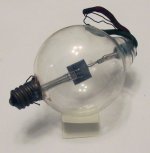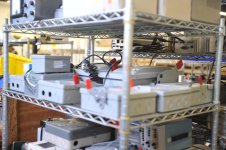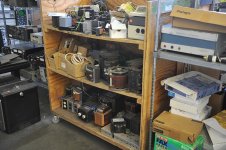The four pin tubes were only diode tubes or a ballast tube. Not many of those in an old radio unless they were making a space heater.
Actually.. four will do for a Triode. Two for the 'basic', not CT, heater - run off Dee Cee batteries, not AC, in the 'gaslight' days of G'Pa's Atwater-Kent - one each plate and grid.
And then..you forgot the rather common 'cap' lead and we can be into Tetrode's as well - still only a 4-pin base.
My 1938 "AC" (only..) Sparks-Withington's audio amp section ran two 4-pin base 2A3 triodes in class A, AND NOT the class AB1 that my 1947 GE Type 41 ran its 4 push-pull-parallel Octal-base 6V6 beam power pentodes in.
There's still a 'warm spot' in my ....anatomy... for those old 'space heater' hollow-state goods!

Back on topic.
Nominal 48 volt Dee Cee coil relays were all over the telecoms industry for a hundred years and more. Most were for signals switching, only a tiny percentage had the requisite current and voltage ratings, contact side, to control motors and such, but exist they certain do.
Moving a tap, else swapping-out, else simply adding a supplementary control transformer and whatever relay coil needs are handy can be accommodated.
Or even Crydom & Sputnik SSR's, commonly 5 to 35 V, but not-only, at the opto-isolated control side.










